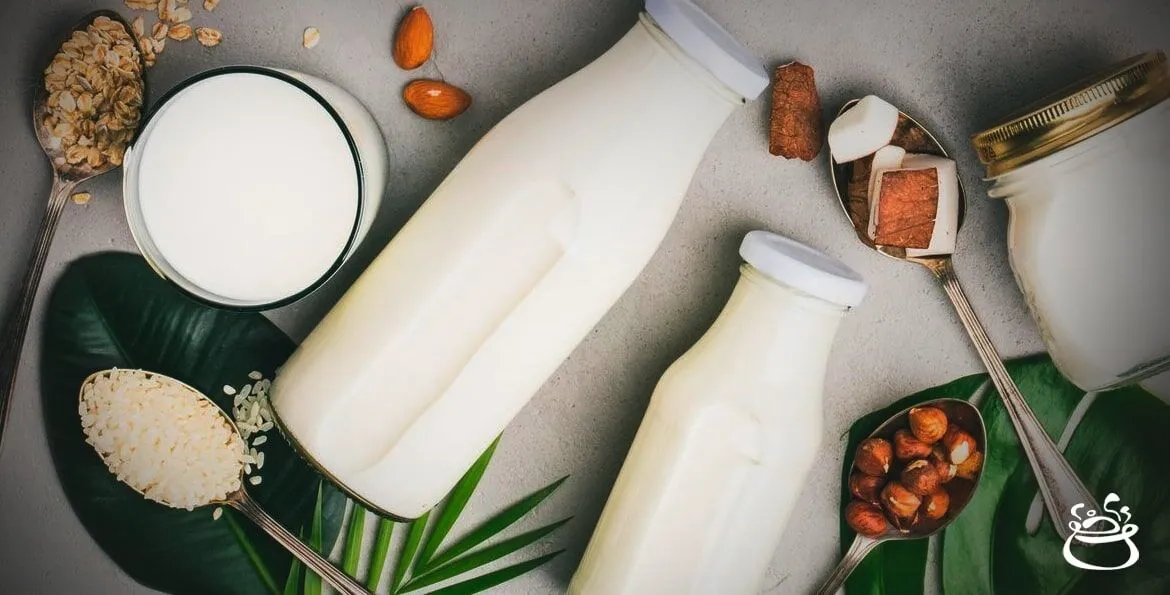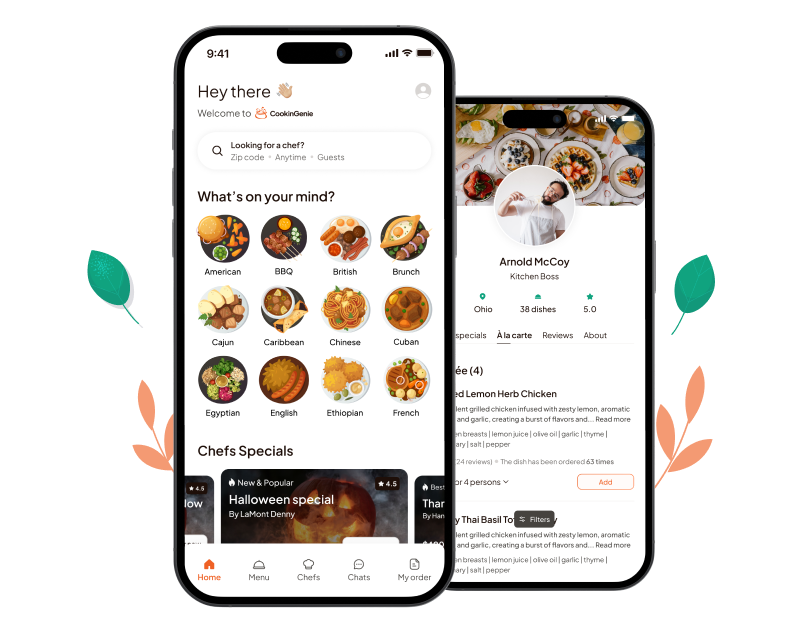Milk Alternatives Made Simple: A Beginner’s Guide
Are you curious about milk alternatives? Maybe you’re lactose intolerant, allergic to dairy, or just looking for a more sustainable and ethical way to consume milk. Whatever your reasons, milk alternatives are an excellent option if you are looking to add variety to your diet. But with so many options out there, where do you start? Fear not, as we have created the ultimate beginner’s guide to milk alternatives.
In this blog, we’ll take you through the most popular types of milk alternatives, the benefits of choosing them over dairy milk, and some helpful tips for using them in cooking and baking. So, grab a glass of your favorite milk alternative, and let’s get started.
Types of Milk Alternatives
Milk alternatives have become popular as more people seek alternatives to dairy milk for health, ethical, and environmental reasons. From nut-based options like almond and cashew milk to grain-based options like oat and rice milk, there are a variety of milk alternatives available, each with its unique taste, texture, and nutritional benefits.
Below are the different types of milk alternatives and information on their characteristics and uses.
Soy Milk
Soy milk is made from whole soybeans or soy protein isolate and has a creamy texture and slightly sweet flavor. It is an excellent source of protein and contains high levels of vitamins and minerals such as calcium, and vitamin D. Soy milk is suitable for cooking and baking and even as a dairy milk substitute in almost any recipe.
Almond milk
Almond milk is made from ground almonds and water and has a nutty flavor and slightly thin texture. It is low in calories and fat and high in vitamin E. Almond milk is ideal for drinking alone or adding to smoothies, cereal, and coffee. It may not be suitable for cooking or baking, as it tends to separate when heated.
Oat milk
Oat milk is made from whole oats and water and tastes slightly sweet and creamy. It is high in fiber and beta-glucan, a soluble fiber that can help lower cholesterol levels. Oat milk is a versatile milk alternative that is an excellent addition to coffee, cereal, and smoothies. It’s also suitable for baking and cooking, making it a versatile choice for any recipe.
Coconut milk
Coconut milk comes from the flesh of coconuts and has a rich, creamy texture and a slightly sweet, nutty flavor. It is high in saturated fat but also contains lauric acid, which helps to boost immunity. Coconut milk is ideal for adding to curries, soups, and smoothies.
Rice milk
If a soy-free, nut-free, and gluten-free milk alternative is what you are seeking, rice milk may be worth considering. Milled rice and water make up the base of this milk, which has a slight sweetness and a thin, watery consistency. Although it is low in fat and calories, it may not be the best source of protein or other essential nutrients. Nevertheless, rice milk can be utilized in various ways in your kitchen and is suitable for baking, cooking, and replacing dairy milk in coffee or cereal.
Benefits of Milk Alternatives
Milk alternatives offer a range of benefits that make them attractive if you wish to make a healthier and more sustainable choice. Unlike dairy milk, which can be high in saturated fat and cholesterol, many milk alternatives have a lower environmental impact and can offer higher levels of certain vitamins and minerals. Here are some of the key benefits of choosing milk alternatives:
Lower levels of saturated fat and cholesterol
Many milk alternatives, such as almond milk, oat milk, and soy milk, are naturally low in saturated fat and cholesterol. These properties can help you to manage your blood cholesterol levels and reduce your risk of heart disease.
Higher levels of certain vitamins and minerals
Milk alternatives can offer higher levels of certain vitamins and minerals, such as calcium, vitamin D, and vitamin B12, essential for bone health, immune function, and nerve function. Fortification of milk alternatives with these nutrients is vital when you follow a plant-based diet or have specific dietary restrictions.
Reduced risk of certain health conditions
Some studies suggest that consuming milk alternatives, particularly soy milk, may be associated with a reduced risk of certain health conditions, such as breast cancer, prostate cancer, and cardiovascular disease. However, more research is needed to understand these associations.
Smaller environmental footprint
Dairy milk production requires copious amounts of land, water, and energy and contributes to greenhouse gas emissions. In contrast, many plant-based milk alternatives require fewer resources to produce and have a smaller environmental footprint.
Ethical considerations
Some people avoid dairy milk due to concerns about animal welfare, such as the inhumane conditions in which farmers keep cows or the separation of calves from their mothers. By choosing milk alternatives, you can provide a cruelty-free alternative to avoid issues related to animal welfare.
Versatility in cooking and baking
Milk alternatives offer versatility in cooking and baking, as they can incorporate into various recipes. They are suitable for making smoothies, baked goods, savory dishes, and sauces, making them an excellent choice if you have dietary restrictions or want to experiment with new flavors and textures.
How to Use Milk Alternatives?
If you’re looking for a healthy and versatile alternative to dairy milk, milk alternatives may be just what you need. Whether you’re avoiding dairy for dietary or ethical reasons or want to try something new, you can use milk alternatives in many ways. Here are some tips to help you choose the suitable milk alternative and incorporate it into your favorite recipes.
Choose the right milk alternative
When selecting a milk alternative, consider factors like taste, texture, and nutritional value. Soy and pea milk are excellent protein sources, making them ideal for individuals who need extra protein. Almond and oat milk are low in calories and fat, making them perfect for those watching their weight.
Use the right milk alternative for the recipe
Different milk alternatives have varying tastes and textures, so choosing the right one is essential. Soy milk works well in savory dishes as it has a neutral flavor that doesn’t overpower the other ingredients. Almond and oat milk have a mild, slightly nutty flavor that complements desserts and sweet dishes.
Incorporate milk alternatives in cooking and baking
Milk alternatives are ideal for cooking and baking but may require some recipe adjustments to achieve the desired texture and taste. For instance, you can use almond or coconut milk instead of dairy milk when making pancakes or waffles. Oat milk is also an excellent choice for baking as it has a creamy texture that adds richness to baked goods.
Add milk alternatives to smoothies and drinks
Milk alternatives can be a fantastic addition to smoothies and drinks, providing extra nutrition and flavor. Oat milk is particularly suitable for smoothies due to its creamy texture and mild flavor that complements fruits and vegetables. Soy and oat milk are excellent options for coffee and tea, as they don’t curdle or separate when heated.
Consider your dietary needs and preferences
When choosing a milk alternative, it’s essential to consider your personal preferences and dietary needs. For instance, individuals with nut allergies should avoid almond milk, while those with soy sensitivities should avoid soy milk. Also, consider factors like sugar content, added flavors, and fortification with vitamins and minerals.
Making the Switch: How to Transition to Milk Alternatives?
Switching from dairy milk to milk alternatives can be a daunting task. However, with some preparation and experimentation, you can find a milk alternative that suits your taste and dietary needs. Here are some tips for a smooth transition:
Start by trying a few different milk alternatives
Milk alternatives come in diverse types, such as soy, almond, oat, coconut, and more. Experiment with a few different types to find the one that suits your taste buds. Try them in various recipes, such as drinking, baking, cooking, or adding to your coffee or tea.
Be patient with yourself
The taste and texture of milk alternatives are different from dairy milk, so it may take some time for you to get used to them. Don’t be discouraged if you don’t like them at first. Give yourself time to adjust and experiment with different milk alternatives.
Gradually switch to milk alternatives
Instead of switching to milk alternatives all at once, gradually incorporate them into your diet. Start using them in recipes requiring less milk, such as smoothies or baking recipes. Then, replace progressively dairy milk with milk alternatives in your everyday routine.
Consider the nutritional value
Different milk alternatives have different nutritional values. Consider your dietary needs and preferences before choosing a milk alternative. For example, soy milk is high in protein, while almond milk is low in calories and sugar.
Feel free to mix and match
You can mix and match your favorite milk alternatives to suit your taste and needs. For example, you can mix soy and oat milk for a creamier texture for your coffee or tea. Experiment with different combinations to find the perfect blend for your taste buds.
Conclusion
In conclusion, switching to milk alternatives can be excellent for several reasons, including health, environmental, and ethical concerns. You can enjoy a cruelty-free, nutritious, and sustainable alternative to dairy milk by choosing milk alternatives.
With the information and tips provided, transitioning to milk alternatives can be a straightforward and rewarding change. So try different types of milk alternatives, experiment with them in your favorite recipes, and enjoy the benefits of a dairy-free lifestyle.



 Settings
Settings
 Gift Card
Gift Card Blog
Blog Locate Us
Locate Us










 Home
Home
 Chefs
Chefs
 Chats
Chats
 My Order
My Order



